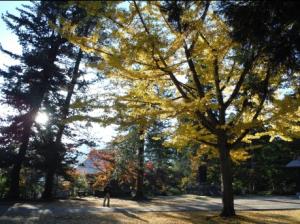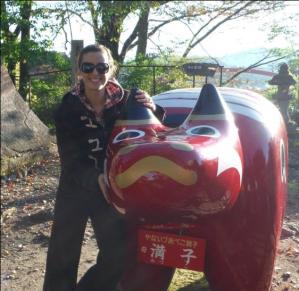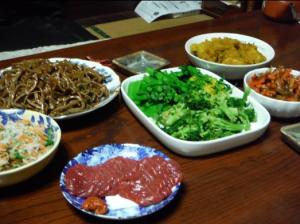Our first stop was at a rice containment and scanning facility in Inawashiro. This was one of the stops I was most looking forward to. I had heard a lot of scary stories and read a lot of articles online about how affected Fukushima still was, even after three years. I was curious to know what levels were acceptable and how my food was actually being scanned and how safe it was. After seeing the process and hearing the numbers, my fears have been erased. I no longer worry about food or water radiation levels and will pass on my relief to others in America and Japan. After lunch at a delicious soba restaurant, we visited the Nishiyama Geothermal Power Plant in Yanaizu. I didn’t know much about geothermal energy and was pleased to hear all about how it works and how little damage it does on the environment. Next we went to the Enzoji Temple and learned about the origin of akabeko and why it is important to Fukushima. I was also surprised to learn that the Nanokado Hadaka Mairi, a type of festival where men in only loincloths run around in the cold winter weather for good luck and health) takes place at this temple. I am sure it would be a sight to see. We ended the day by separating into groups of 3 or 4 and participating in a homestay with local farmers. Dinner was a delicious mix of mountain vegetables, raw horse meat, warm soup, and rice. It was really nice to talk to the farmers about what daily life was like for them and what their family does now. In the morning, we helped our farmer family by beating dried herb plants with sticks to make the seeds fall out onto a tarp. It was about an hour’s worth of vigorous work and I was glad to help! After the seeds dry out, the farmer will send them to Minamisoma where they will be made into oil. We traveled by bus to our next location and listened to a presentation by an employee of IIE, a company that is helping locals who were affected by the disaster make products from Aizu cotton to sell in stores and online. They had a lot of wonderfully made stoles, bow ties, and towels for display and purchase. Lastly we went to Tsurugajo-castle where we toured the inside and outside and learned what the effect of the disaster was on the castle’s tourism flow. It was good to know that they are slowly gaining popularity again, but sad to know that no matter where in Fukushima a place is or a food is from, the name Fukushima still has some negative connotations associated with it. I hope to spread the word that Fukushima is a wonderful and safe place. |
| Summary |










